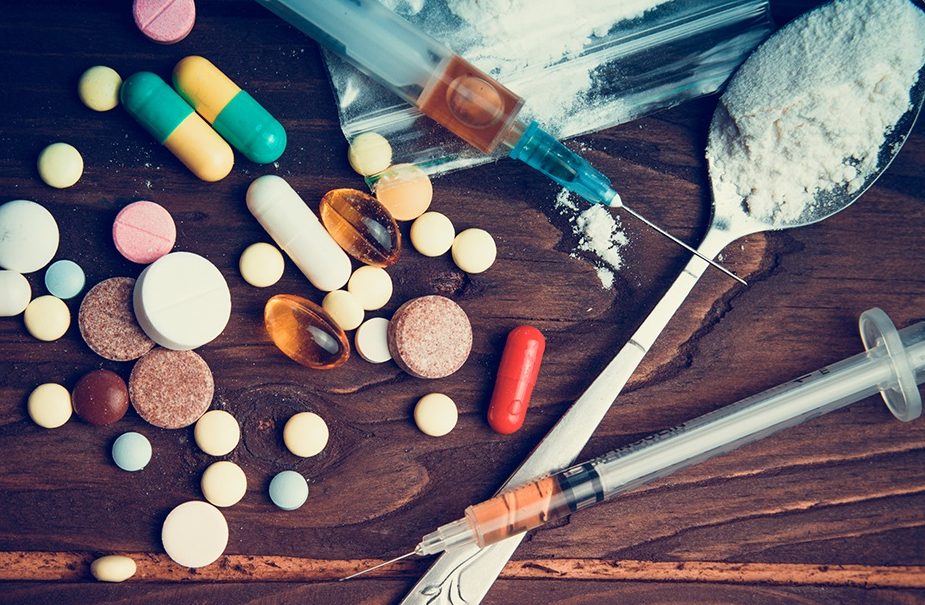In Europe at the end of the 2000s, the problem drug was krokodil. The semi-synthetic, necrosis-causing alternative to heroin was cheap. My father favored it so much before his death that he started importing it from eastern Europe into Wales. In America right now, the problem drug is fentanyl, which has made its way into much of the US drug supply. Indeed, it’s become so synonymous with death that many casual users have given up the bag all together (“I love a line, but I’m not going to die for it,” one Manhattanite told me recently). More than 75,000 Americans died from synthetic opioids in 2022. And now the opioids crisis has arrived in Wales.
When I asked friends back home in south Wales whether stories about the new influx of synthetics were just something the papers were using to fill their pages, people told me that no, it’s real — and noticeable. A colleague of my old next-door neighbor dropped dead; a friend’s cousin had an overdose at Christmas. But it’s not fentanyl they’re worried about. What faces Wales, and perhaps the rest of the UK, is something even deadlier.
When heroin disappears, addiction to it does not. Even worse replacements soon crop up
Since the Taliban clamped down on opium cultivation two years ago, reducing Afghanistan’s poppy crop by 95 percent and devastating the European heroin market, a new type of drug has stepped in to fill the gap: nitazenes. A strain of synthetic opioids first developed by pharmaceutical companies in the 1950s but never approved for medicinal use, nitazenes are being shipped across the world from Chinese labs and are ending up in the arms or up the noses of unsuspecting customers. Some strains are 500 times stronger than morphine; all are stronger than heroin, the drug they try to replicate. After a spate of deaths in Wales and around Dublin over the past six months — including more than fifty overdoses in one weekend — drug charities are warning that the nitazenes boom is here.
“The dealers are trying the drugs out. They know that they are stronger, and they don’t want to kill their market,” says Crispin Watkins of the Wales-based drug and alcohol charity Kaleidoscope Project. “They want their customers to come back. So they want to present something that looks and behaves and has the user experience like heroin.” The problem with this is that when there is more money to be made, some dealers get greedy. Across Wales nitazenes have been detected in street-dealt benzodiazepines and cannabis products. Wedinos, a drug-testing lab in Wales, has even found strains in vape pens. While the average heroin user may not notice or mind that their usual stuff is being swapped with a stronger, synthetic opioid, the average benzo and cannabis user — or kid buying his first vape — certainly isn’t looking for a heroin high.
From April 2022 to March last year, thirty-six bags of nitazenes were handed over to Wedinos by worried buyers, none of whom had set out to get the drugs specifically. I reached out to people who had accidentally taken them. One, who tried a fake benzodiazepine cut with the synthetic opioid, told me: “It feels like you’re being held in place. I couldn’t speak. I could move my mouth, but nothing would come out. I could stand, but I couldn’t move my legs.” Another friend who’d unwittingly tried it compared it to feeling like “when you take too much ketamine. Like, so much ketamine your legs go from underneath you and you lose the ability to see. But it takes much longer to snap out of and you feel like you’re going to die.”
There is every reason to think this is just the beginning. “We are very worried,” Watkins says. “What we’re seeing in Wales is just the start of the drug’s disbursement.” It is likely that nitazenes have been here in some capacity for well over a year. Kaleidoscope Project first noticed them twelve months ago, although strange deaths around the country had been happening periodically before that but were put down to a “bad batch of spice.” The true damage so far is not known precisely because of how new these drugs are.
America provides a dire warning about how bad the spread of synthetic opioids can get. Using heroin isn’t ideal, obviously. We’ve all watched Trainspotting and seen what happened to Jim Morrison and Amy Winehouse. We’ve all had a run-in with the local crackhead. In Wales in the 1990s, my own father turned from a normal nice guy into what can only be described as feral after becoming addicted to the drug, finding cash wherever he could for his next fix, generally by selling the stuff. But when heroin disappears, addiction to it does not. Even worse replacements soon crop up.
Two people in Wales were arrested last week in connection with supplying drugs laced with the opioids to inmates at HMP Parc. Six prisoners died earlier this year after taking drugs and, at the time, the prisons and probation ombudsman, Adrian Usher, claimed that it was probable the “deaths are all spice-related.” “There has been a national public health warning issued about this particular drug, the name of which is yet to be determined,” he added.
Post-mortem examinations later determined that four out of the six deaths were due to nitazenes. “Right now we can trace the distribution of nitazenes through certain bad batches of heroin. Parc is an example of that, where one batch of drugs came in and several people took from that batch,” Watkins says.
Kaleidoscope Project is worried that the rumors of a fatally strong, heroin-like opioids could backfire as the press spreads the word about the danger. “People start hearing there is a new, super-strong batch of heroin out there, there are some users who say, ‘Great, where do I get it?’” Watkins says. But nitazenes are on a different planet to heroin, and the usual opioid reversal drug, naloxone, doesn’t respond to them in the same way. “One can of naloxone has five doses in it, and if you get to someone in time, within a few doses you could take a person out of overdose and stabilize them until they’re able to get to hospital. A few weeks ago, a paramedic had to administer eight doses of naloxone, but [the user] just kept relapsing and relapsing. After they recovered in hospital for two days, they left the hospital and overdosed and died.”
This article was originally published in The Spectator’s UK magazine. Subscribe to the World edition here.


























Leave a Reply